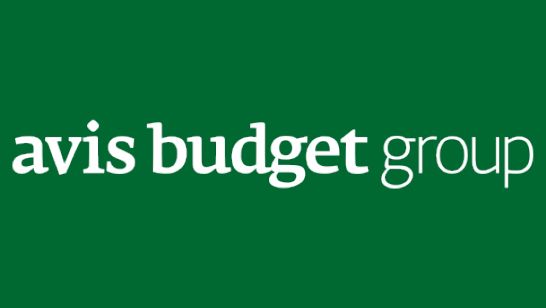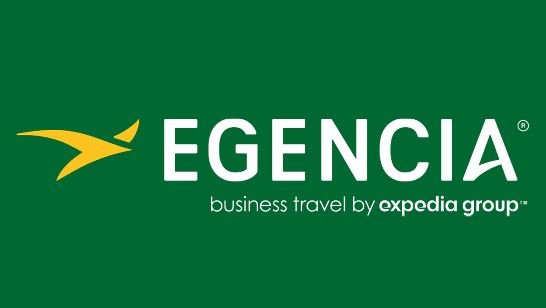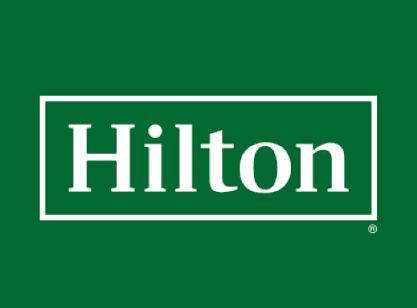BOOKING TOOLS MEASURE UP
As carbon emissions data begins to flow through booking systems, are we really presenting travellers with actionable information?


Organisational carbon reduction goals are widely considered one of the most powerful drivers in the push toward a more sustainable corporate travel ecosystem. But such initiatives, typically set by corporate leadership, must be actionable at the level of the individual traveller to be fully effective. And perhaps nowhere does the rubber of sustainability strategy more firmly meet the road of employee behaviour than within the context of the travel booking process.
With that concept in mind, many online booking tools and other providers have begun adding sustainability data to their systems, presenting the emissions associated with a given flight or ground transport option, or the carbon footprint of a particular hotel stay, within the OBT environment. Those calculations are based on a variety of government and non-governmental organisational methodologies, as well as proprietary methods.
By offering up sustainability data alongside other key booking information such as price, departure and arrival time and Covid-19-related hygiene and safety data, managed travel programmess can equip travellers with the information they need – when and where they most need it – to drive more sustainable booking behaviour, according to proponents of the model.
And as corporate travel gradually resumes after a year-plus pandemic-induced pause, the opportunity is ripe to elevate emissions to top-of-mind considerations for travellers returning to the road, ultimately instilling booking habits that will pay long-term dividends in corporate travel’s transition to a more sustainable future.
EMISSIONS EMERGENCE
The concept of an in-booking carbon emissions gauge dates back nearly a decade. KDS’s Neo was among the earliest OBTs to include such functionality, offering a “greenest” door-to-door itinerary option and leg-specific emissions figures when it launched in early 2013. Neo has since come under the ownership of American Express Global Business Travel – which acquired KDS in 2016 – and the travel management giant has continued to fine tune Neo’s emissions features.
The greenest itinerary function was shelved, replaced in 2020 by a simplified sorting and filtering option, which can be combined with other search criteria to enable users to find, for instance, the greenest option below a given fare threshold. Soon after, Amex GBT added a hotel search feature that highlights properties meeting certain environmental standards, and in March 2021 it added a filter for electric and hybrid vehicles for car rental searches.
Notably, the development and rollout of those functions was driven by Neo’s corporate users, according to Bertrand Blais, vice president of product management for Neo. “Our most recent enhancements are a result of increased customer demand for these features… to raise awareness of the impact of travel on CO2 emissions,” said Blais.
While he conceded that trip duration and departure and arrival times remain the main criteria for most travellers when making a booking, the emphasis on sustainability has ramped up considerably, Blais noted, citing a recent poll of Amex GBT’s clients in the Netherlands that found sustainability was the top concern, outranking other factors including cost controls.
Meanwhile, SAP Concur offers the ability to display sustainability data within its Concur Travel OBT, where it appears alongside other key booking information such as departure time and duration, as well as to sort search results by carbon emissions.
While badging preferred sustainable suppliers isn’t yet available, according to customers, travel managers can configure search results to highlight sustainable suppliers and deliver messaging to promote greener travel options, such as booking a train instead of a flight for shorter journeys. Searches can also be set to display multiple modes of transport on the same results screen to enable side-by-side comparisons based on emissions and other criteria.
The newer generation of TMC/OBT hybrid providers are incorporating emissions tracking capabilities into their own platforms as well. Barcelona-based TravelPerk includes per-trip emissions measurements as part of its GreenPerk carbon mitigation service, which gives clients data insights into their travel-related carbon footprint, which can be used to inform policy and supplier negotiations, along with the ability to purchase offsets.
“You can’t manage what you can’t measure,” said Raphaël Daverio, senior product manager for TravelPerk, adding that an accurate gauge is “absolutely fundamental” to any corporate travel carbon mitigation or sustainability strategy.
To ensure the emissions data is reliable and granular, TravelPerk works with Atmosfair, a non-profit carbon mitigation specialist whose proprietary emissions data calculation methodology is based on several organisational standards but tailored specifically for corporate travel. Integrated into TravelPerk’s booking tool via API, the calculator takes into account factors “from the simple distance of a given flight or train ride to more complex elements such as the type of plane used,” Daverio noted.
The debut of GreenPerk in late February 2020 was “one of the most successful product launches we’ve had in the past years,” according to Daverio. “We saw crazy demand for the product and experienced hundreds of sign-ups following its launch. We saw this as a strong indicator that sustainability was top of mind for our customers at the time.”




“Forward-thinking and leading organisations and individuals saw the pause in business travel as a real opportunity to implement valuable solutions that bring new capabilities into the context of their travel programmes – and no more so than where sustainability is concerned”
Mark Corbett, Thrust Carbon


THE GREAT (GREEN) RESET
Of course, just weeks later, the corporate travel industry would be turned upside down by the global outbreak of the Covid-19 virus, which brought most corporate travel activity to an abrupt halt, where it would remain throughout the rest of the year and into 2021.
But even under the shadow of the pandemic, travel managers remained focused on sustainability efforts. In fact, with travellers sidelined, many managers had the time to devote to innovation – an unprecedented opportunity to re-imagine their programmes and take steps toward achieving long-standing goals. For some companies, sustainability was top of that list.
“Forward-thinking and leading organisations and individuals saw the pause in business travel as a real opportunity to implement valuable solutions that bring new capabilities into the context of their travel programmes – and no more so than where sustainability is concerned,” said Mark Corbett, director of Thrust Carbon, a UK-based startup that offers emissions measurement tools and offsetting options.
Thrust Carbon’s emissions measurement capabilities can be integrated into clients’ booking tools, and the company over the past several months has crafted OBT integrations with Concur and CWT, among others. The company was awarded top honours at BTN’s Innovation Faceoff in October 2020, with judges citing the its potential to drive more sustainable travel decisions by presenting emissions data within the booking flow.
As travel remained at a relative trickle during the first months of 2021, plenty of other suppliers rolled out emissions gauges, touting the opportunity to implement and test those offerings during the ebb in activity, so that the tools are firmly in place as travel resumes.
In March 2021, corporate lodging platform HRS launched its Green Stay initiative, a solution that enables travel managers to highlight hotel properties that have surpassed sustainability standards based on energy consumption, water use and waste disposal. Managers can configure online booking tools to denote such properties with a special icon, or to only display properties that meet defined sustainability thresholds in the search results.
Deem’s newly launched Etta online booking and travel management platform also offers clients the capability to install a badging function for sustainable booking options. Global travel management provider FCM Travel – which is currently at work on an entirely new booking and management platform of its own – has tabbed providing in-booking carbon emissions data as part of its future roadmap.
Meanwhile, TripActions is working to provide information about the emissions from a given booking option, presenting such data in easy-to-understand format – such as equating a particular booking’s emissions to a number of plastic water bottles deposited into a landfill – with the aim of driving sustainable booking behaviour.
For travel managers, the digestibility of sustainability information is key to enabling their travellers to take those factors into account when booking
“I want to show green options in the OBT,” said Rebecca Jeffries, travel services manager for Toyota North America. “But I want it to be super-simple, and I don’t want my travellers to have to look for it and figure it out.”
Jeffries is currently working with her OBT provider, Deem, to create and implement such a sustainability rating system for transport and hotel options, she said. One other advantage of a rating model compared to presenting emissions as raw numbers within the booking tool is the potential that figures might not be accurate – a particular risk for aspects like aircraft load factors, which aren’t determined until a flight takes off, Jeffries noted.
As slick as the user interface may be, Amadeus VP customer solution for corporation Lydie Charpin agreed the calculations behind the scenes can be rough. “For air, it is linked to type of plane, load factor, class travelled and ancillary services; and for hotels, parameters include type of construction, level of services and sustainability measures the hotel has taken. We are working with a specialist partner to find a more sophisticated and accurate way of measuring CO2 for accommodation,” she said about the emissions calculations in Amadeus’ Cytric tool.
To get around those issues, Jeffries said, “I’d like to [use] some sort of a grading system, or red-yellow-green colour scale. “I would rather point out if this particular aircraft is more sustainable than another one, or if a hotel is LEED-certified over an approach based on raw numbers.”
TravelHorst Sustainable Business Travel Consulting founder Horst Bayer agreed. “As we are bringing all these numbers through to the online booking tool, are travellers the ones who should be making these decisions? What context are we giving them? And what alternatives? If we tell them a flight emits 3,000 metric tonnes of CO2, what does that really mean for them?”
Whichever format such tools may take, the ability to furnish travellers with emissions information within the booking process is “long overdue,” noted Norm Rose, president of Travel Tech Consulting.
“There was significant corporate customer demand [for such services] prior to Covid, especially in Europe, driven by corporate sustainability initiatives,” Rose said. Now, as travel buyers and managers prepare for the next phase of business travel, “sustainability has resurfaced as a major trend for OBTs,” he observed, going on to predict that in-OBT emissions tracking capabilities will be among the “major” areas of industry focus as travel returns over the next 18 months.
MESSAGING MODEL
The drastically enhanced onus on corporate travel duty of care responsibilities amid the Covid pandemic also drove increased demand for capabilities to send health and safety-related alerts and destination-specific messages to business travellers. To fulfill that need within the context of the booking channel, some providers that already offered general in-booking messaging pivoted to focus their services more closely on Covid-related messaging.
Looking more deeply into travel’s return, some of those services are beginning to eye sustainability-related messaging as another key use-case for their tools.
One such provider, Tripkicks, was initially launched in 2017 as a corporate travel cost-saving tool built upon offering rewards to encourage travellers to save money when booking. With the onset of the Covid-19 pandemic, the company shifted its value proposition, building a new booking tool add-on that presents relevant travel information and alerts within the booking flow.
While safety is the priority amid the height of the pandemic, in-booking sustainability messaging had been on the company’s radar for some time, according to Tripkicks CEO Jeff Berk. “In late 2019, we started working on the ability to highlight the most eco-friendly supplier options within a booking tool,” he said.
Tripkicks’ sustainability messaging tool, which can currently be integrated with Concur Travel, uses a simple ranking model to highlight which air and hotel bookings among a chosen set of options are the most eco-friendly based on comparison with each other. The goal is to ensure the information is presented in a way that’s relevant and actionable.
Highlighting sustainability information within the booking process can absolutely impact a traveler’s decision [but] not every person can conceptualise what a measure of carbon equates to,” Berk noted. “When you put it in terms they understand – ’this property is LEED-certified’ or ‘this Dreamliner is more efficient than a 777 from the 90s’ – it starts to become relatable.”
Another messaging provider that adopted a Covid-centric service model is Shep, whose browser extension-based platform was initially designed to mitigate off-channel booking by detecting when a traveller was attempting to book directly on a supplier’s website and sending a message directing them back to their company’s preferred booking channel.
Like Tripkick’s Berk, Shep CEO Daniel Senyard sees sustainability messaging as a promising post-pandemic application of its platform. “As Shep is a flexible communications tool, you can really add any sort of custom sustainability messaging,” said Senyard. “You could ask employees if they really need to travel as they start searching for a flight and prompt them to use Zoom instead. On the flight result page, you could tell them to use an airline that uses sustainable fuel or remind them to fly economy class. You could also pop up a message telling them to take the train when they search for a flight from Paris to London, or to stay at a particular hotel when they search for a specific city.”
To enhance its offering around sustainability messaging, Shep in late April partnered with Thrust Carbon to integrate dynamic data and carbon emission calculations into the booking flow within an OBT environment, presenting booking-specific information and comparisons such as, “’This flight is the equivalent of driving a small car 8.9 per cent to the moon,’ or ‘This flight is the equivalent of 16,000 hours of videoconferencing,’” Senyard said.
As Senyard sees it, while after-the-fact emissions reporting plays an important role in corporate travel sustainability efforts, guiding travellers to make more sustainable booking decisions on the front end is ultimately the more effective approach for creating greener travel programmes.
“It’s far better not to break something in the first place than it is to try to fix it after the damage is already done,” the Shep chief executive said. “By nudging employees to make greener travel choices through awareness, quantitative numbers or incentives, a company is able to proactively improve their carbon impact.”




















